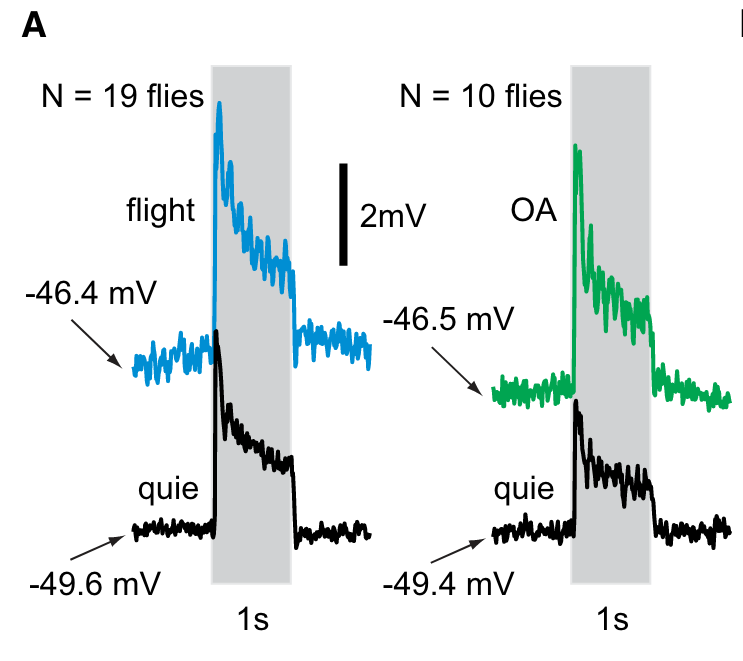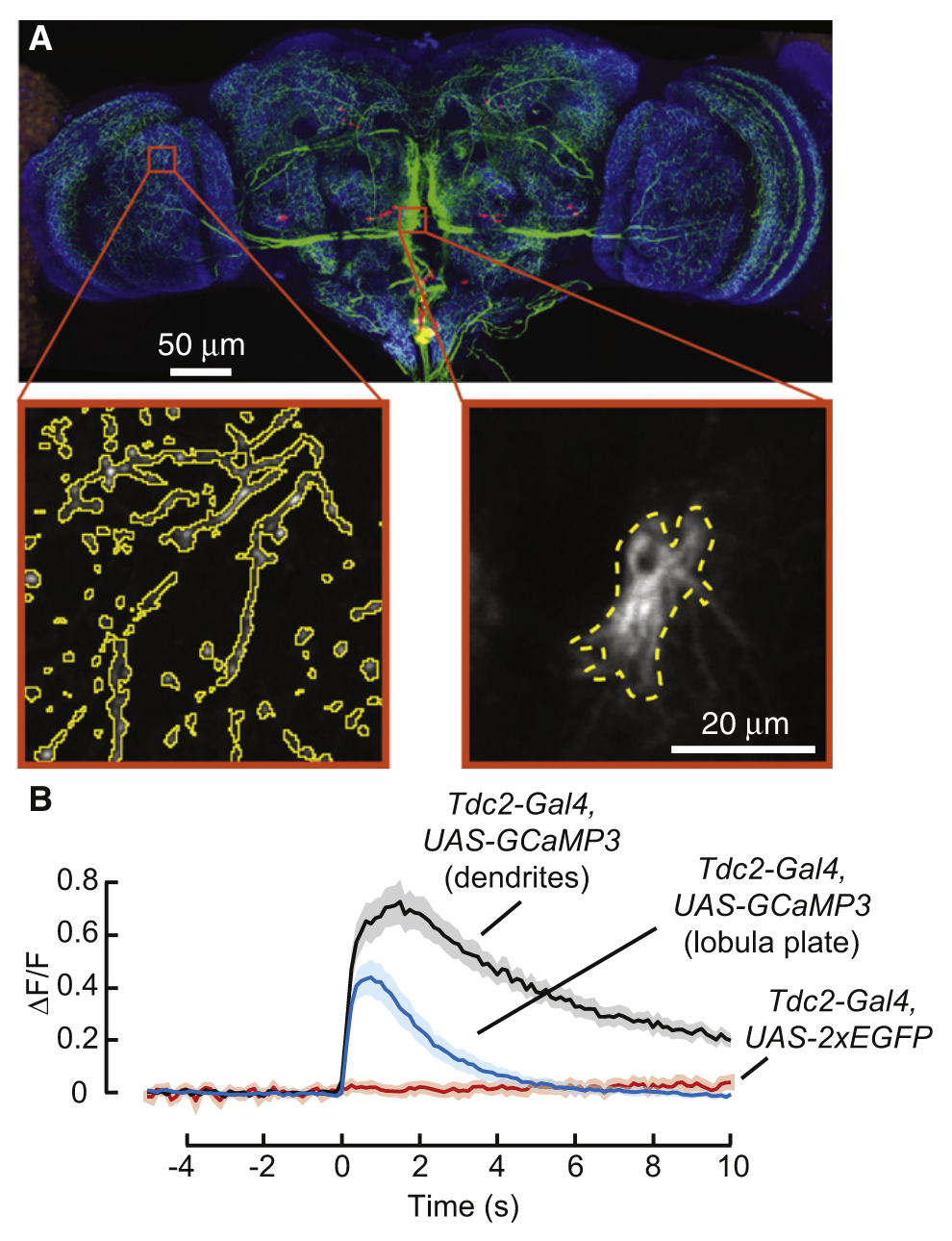Octopamine Neurons Mediate Flight-Induced Modulation of Visual Processing in Drosophila
authors: Marie P. Suver, Akira Mamiya, Michael H. Dickinson
doi: 10.1016/j.cub.2012.10.034
CITATION
Suver, M. P., Mamiya, A., & Dickinson, M. H. (2012). Octopamine Neurons Mediate Flight-Induced Modulation of Visual Processing in Drosophila. Current Biology, 22(24), 2294–2302. https://doi.org/10.1016/j.cub.2012.10.034
ABSTRACT
fleeting notes
-
visual neurons (the vertical system) increase activity during flight in response to increase in visual motion
-
octopamine application during rest mimics activity seen in flight
-
octopamine neurons are necessary and sufficient for the flight induced visual boost
-
octopamine mediates the state dependent modulation of visual information
vertical system
- large field visual neurons
- located in lobula plate
- wide field motion and optic flow
- help stabilize reflexes of neck motor and wing motor system
octopamine orchestration hypothesis
-
sombati and hoyle
-
specific sets of octopaminergic neurons were involved in generating specific behaviors
-
octopamine agonist = chlordimeform
vertical system cells respond to multiple frequency domains of visual motion
-
respond to either upward or downward motion with opposite changes in membrane potential
-
strongest response at 1hz in flying and quiescent (as seen in maimon et al 2010)
-
flight dependent boost is strongest between 2 and 8hz
-
these cells help mediate optic flow
-
octopamine replicated response of neurons in the vertical system in quiescent flies
- it also increases activity during flight
-
octopamine neurons increase activity during flight
- only measured neurons that project to visual system but do all? probably but we dont know
-
flies start flying in response to heat
-
activating octopamine neurons boosts activity of vertical system neurons like what is seen during flight
-
inhibiting octopamine causes inability to lay eggs
- but still able to fly
-
flies lacking octopamine do not have the visual boost during flight
-
octopamine neurons do not cause the membrane shift at onset of flight but help boost it
octopamine activity increases during flight
highlights
“Using genetic tools to manipulate the activity of octopamine neurons, we find that they are both necessary and sufficient for the flight-induced visual boost.”Page 1
“Similarly, the responses of visual interneurons in flies are enhanced during walking [5] and flight [6, 7] compared to the responses in quiescent flies.”Page 1
“A large body of research on locusts suggests that the biogenic amine octopamine orchestrates physiological changes throughout the body during flight.”Page 1
“octopamine agonist chlordimeform”Page 1
“Upon octopamine application, the resting potential of the VS cells rose, and their response to visual motion increased, similar to the effects observed during flight”Page 3
“During octopamine application, baseline membrane potential shifted upward during flight”Page 3
“A set of six octopaminergic neurons (called AL2 neurons by Busch et al. [25] and G3a neurons by Sinakevitch and Strausfeld [26]) send projections to the optic lobes”Page 3
“Many flies responded to the elevation of bath temperature by spontaneously initiating flight, but in these cases we waited until they stopped flying before beginning our measurements of VS cell responses”Page 4
“These results suggest that whereas octopaminergic neurons may not be responsible for the flight-induced shift in baseline membrane potential, they are sufficient to produce the increased gain in visual responses.”Page 4
“Flies with chronically inactivated octopaminergic neurons were, however, both viable and able to fly,”Page 5
“The octopamine orchestration hypothesis made explicit predictions about the role of octopamine neurons in regulating insect behavior. Sombati and Hoyle [15] proposed that specific modulatory neurons were responsible for coordinating wide-scale changes in physiology that were necessary to elicit various behaviors and that octopamine played such a role for flight. The fact that flies in which we presumably reduced the activity of all octopamine neurons still retained the ability to fly suggests that the original hypothesis, strictly interpreted, does not apply to Drosophila.”Page 7

